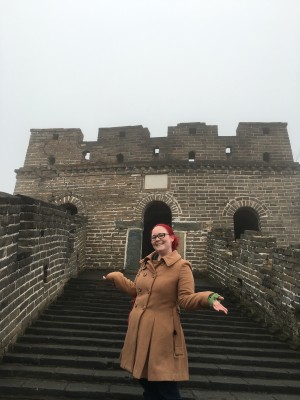Explain the tests: Complete blood count (CBC) – Low red cell count (Part two)
The process of making red blood cells is called erythropoiesis. Mature red cells live in the blood for 100-120 days before they die. As they get older, red cells are removed from the blood stream. A small amount of red cells burst in the blood stream before they are removed. This is called hemolysis. Most red cells are removed by special white cells called macrophages in the liver, spleen and lymph nodes. When the production and destruction of red cells are not balanced, red cell count is abnormal.
Red blood cells (erythrocytes) are responsible for transporting oxygen from the lungs to the tissues. Red blood cells have lots of hemoglobin inside their cells. Hemoglobin is a protein that has a form of iron at its center called heme. Hemoglobin binds oxygen so that it can be brought to other parts of the body. When red blood cell count or hemoglobin is low, the body cannot get enough oxygen to the tissues. This is called anemia.
A number of conditions can cause low red blood cell count. They can be placed into three categories: not making enough red blood cells; breaking down too many red blood cells; and blood loss. Additionally, changes in amount of fluid in the blood stream can artificially alter red blood cell and hemoglobin levels.
Normal range for red blood count:
- Adult women: 3.9-5.0 million cells/µL
- Adult men: 4.3-5.7 million cells/µL
Reasons for not making enough red blood cells:
- Low levels of erythropoietin, a molecule that tells the bone marrow to make red cells
- Deficiency or abnormality of hemoglobin
- Nutritional deficiency
- Damage to stem cells
- Inability to make red cells from stem cells
Some conditions that interfere with making enough red blood cells:
- Viral infections, such as parvovirus B19, herpes viruses and hepatitis. Some viruses induce pure red cell aplasia, which affects the cells that become red blood cells.
- Overproliferation of white cells, such as lymphomas, leukemias, autoimmune lymphoproliferative disease. These conditions can also induce pure red cell aplasia. If too many of one cell type is in the bone marrow, it reduces the space for other cell types. In this example, too many white cells are produced, so there is not enough space for red cells.
- Myelodysplastic syndromes. In MDS, the stem cells that develop into blood cells are thought to harbor damaging mutations. The process of making blood cells is very disordered in MDS.
- Aplastic anemia. In aplastic anemia, blood stem cells are damaged.
- Deficiency of vitamin B12, iron or folate. Iron deficiency interferes with production of hemoglobin, while B12 or folate deficiency prevents normal cell division to make new cells.
- Chronic kidney disease. Kidney cells release erythropoietin to stimulate making new red cells. If the kidney cells are damaged, they may release less erythropoietin.
- Chronic inflammation. Chronic inflammation can interfere with absorption and use of iron.
- Thalassemia causes hemoglobin to be misshapen.
- Medications, like mycophenolate.
Reasons for increased destruction of red cells
- Misshapen red cells
- Abnormalities of red cell membranes
- Hemoglobinopathies, conditions in which hemoglobin is defective
- Attack by antibodies
- Mechanical damage
Some conditions that cause increased destruction of red cells:
- Hemolytic anemias. This is a general category that encompasses many conditions, including antibody mediated hemolysis, enzyme deficiencies and membrane abnormalities.
- Membrane abnormalities, like in G6PD deficiency (favism). The membrane is weakened in this condition.
- Hereditary spherocytosis and hereditary elliptocytosis. In these genetic conditions, red cells are misshapen.
- Antibodies targeting red cells, such as autoimmune hemolytic anemia and transfusion reaction.
- Hemoglobinopathies, like sickle cell disease and hemoglobin C disease. Enough hemoglobin is made, but it is structurally abnormal.
- In this condition, there is a genetic mutation that interferes with production of hemoglobin.
- Mechanical damage, such as in hemodialysis or malaria. In these conditions, the red cells die for physical reasons.
Reasons for blood loss
- Trauma or surgery.
- Gastrointestinal bleeding. This can be caused by inflammatory bowel disease, ulceration, varices or infection.
- Excess blood loss due to menstruation or fibroids
- Anemia of prematurity. This is caused by the need for frequent blood draws for testing coupled with low production of red cells by premature babies.
Situations that cause artificially low red blood cell count:
- Pregnancy, due to increased blood volume.
- Hypervolemia, from high water or sodium consumption or retention.
- Hypervolemia, from recovery of third spaced fluids.
Special notes on low red cell count for mast cell patients:
- Many mast cell patients suffer from anemia of chronic inflammation, which can result in low red cell count.
- Some patients have inflammatory bowel disease, which can result in low red cell count.
- Swelling of the spleen (splenomegaly) can cause low red cell count. Splenomegaly is a B finding for SM patients. Two B findings result in diagnosis with smoldering systemic mastocytosis (SSM).
- Overactivity of the spleen (hypersplenism) can cause low red cell count. Hypersplenism is a C finding for SM patients, resulting in diagnosis with aggressive systemic mastocytosis (ASM).
- Use of some chemotherapy drugs can impair production of blood cells, including red cells.


